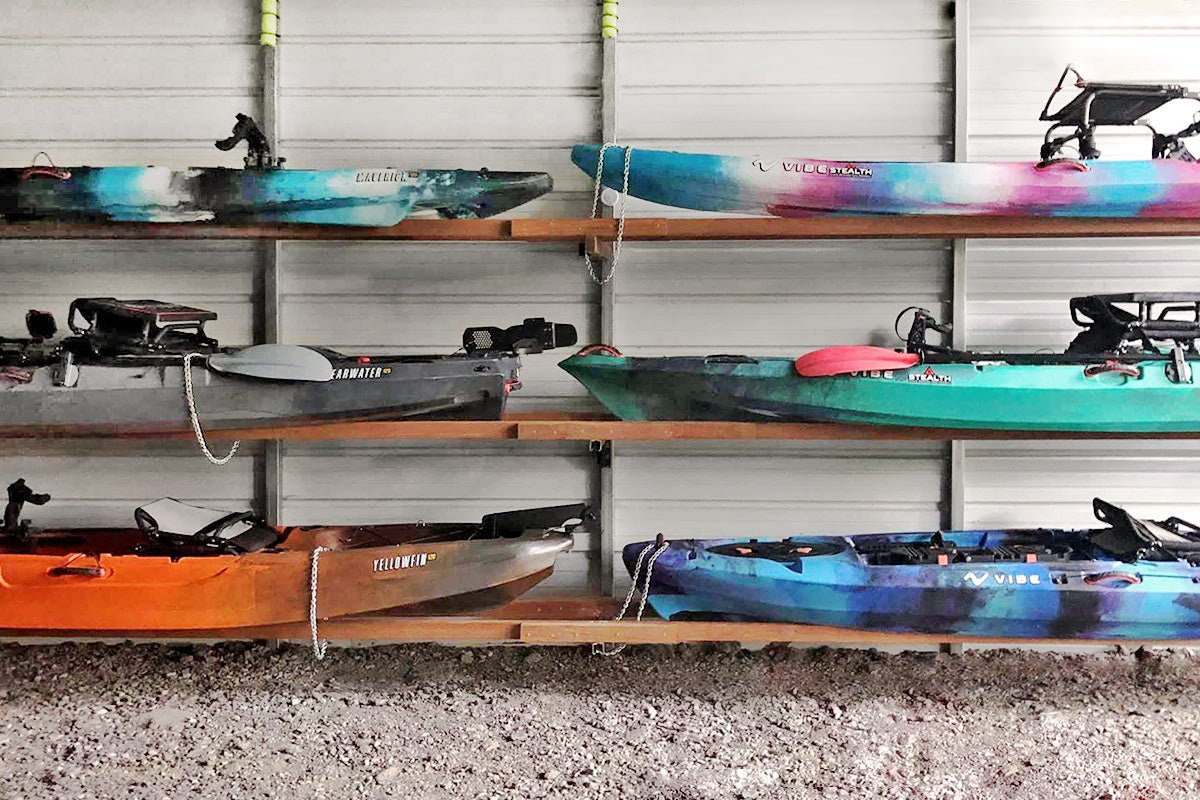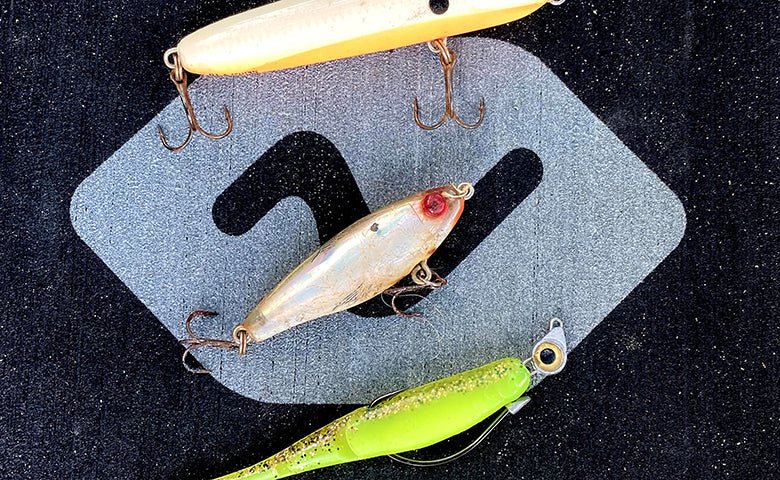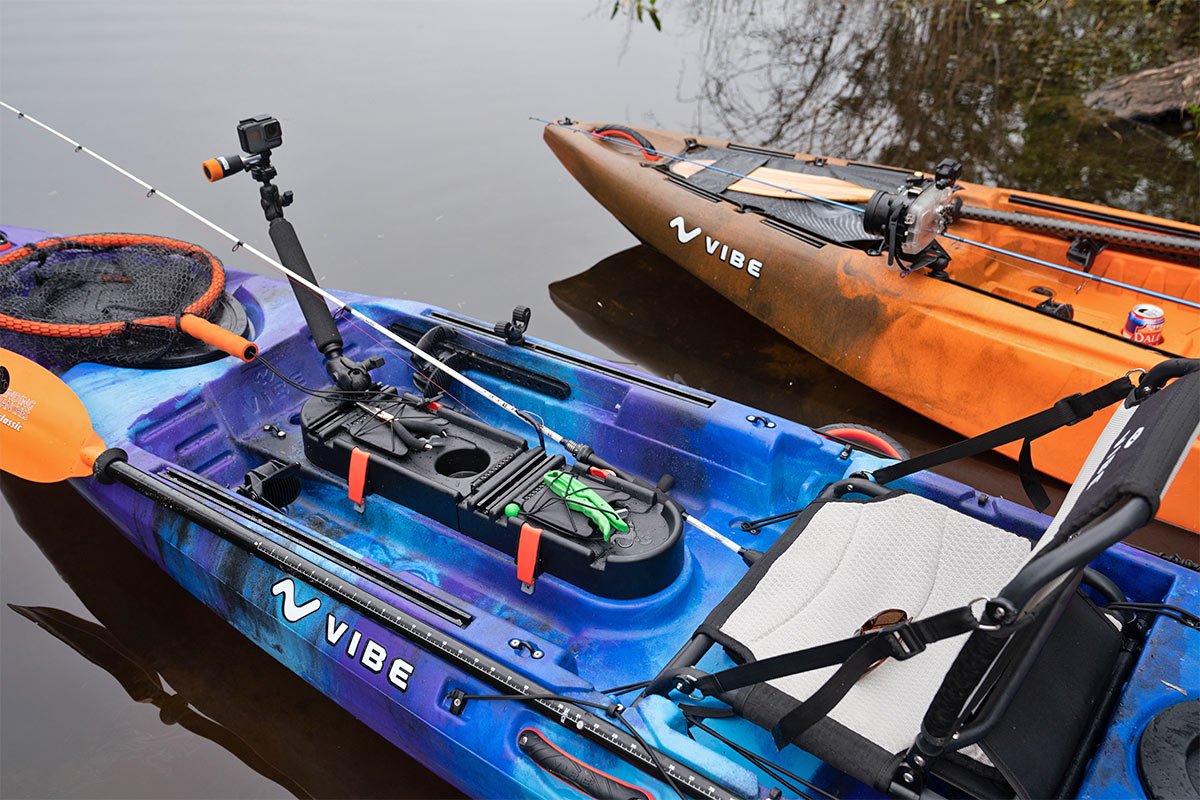How to Store a Kayak

So you bought a kayak (or two) and now you have to figure out where and how to store it. There are actually a lot of options, but here are the basic rules to abide by to keep your kayak safe, secure, and in great shape.
A few things you need to be aware of when selecting a location or method are: the temperature, moisture, sunlight, and security. So with that being said, let’s explore some options and ideas for storing a kayak.
Location
The first thing that needs to be decided is where to store your kayak. Indoors is always the better option, but it’s just not practical for many people. Storing a kayak outdoors is fine as long as you take some extra steps to protect your investment.
- Don’t store in direct sunlight. Keep your kayak in the shade. This can be under a tarp/tent, awning, or roof eaves.
- If you’re storing under a flexible cover such as a tarp, make sure it’s high enough or tight enough so it doesn’t buckle under snow or rain. This can lead to deformities on the hull.
- Whether you’re storing indoors or out, it’s never a good idea to store your kayak on the floor or ground. You can prop your kayak up on foam blocks or something similar like these racks. The idea is to keep pressure off any area of the hull so it doesn’t cause any deformities.
- Moisture can degrade your kayak over time, so keeping it dry during storage is optimal, although not always possible.
- Extreme heat can cause deformities in kayaks, which is another reason to keep it in the shade
- Extreme cold isn’t as much of a problem but can still degrade or cause cracks in the hull. If you take good care of your kayak and store it properly, the cold shouldn’t be much of a factor.
What Equipment To Use
Now that you have a location, you’ll need equipment to store your kayak. Other than the foam blocks mentioned above, there are two main types of storage systems: suspension, and racks.
Suspension
Suspension might be the best option for kayak storage. It involves wrapping straps around the kayak and suspending it from the ceiling. It keeps your kayak out of the way, keeps it secure, and protects it from pressure and the elements.
Most systems use a strap to go around the hull instead of holding it by the ends. Also, these systems can be used for other equipment like ladders, bikes, coolers, etc.
Racks
Racks are another option for storage. They’re portable and can be setup anywhere. There is a huge price range for racks due to so many options. Some bolt to a wall, some are free-standing, others have wheels, etc. Some racks are built for multiple kayaks and some are built for one. Regardless of which style you choose, look for a rack that lets you store your kayak on it’s side or provides pressure relieve for storing hull side up.
Theft Protection
Regardless of how and where you store your kayak, security should always be a consideration. If you’re storing in a locked building like a garage, odds are your kayak is pretty secure. However, there are a few steps you can take to ensure it’s safety.
- Keep out of view. This is obvious but it’s important. Don’t store your kayak in a location where people can easily see it.
- Use a bike lock or cable lock to secure your kayak. You can loop it through the seat or anywhere that has an opening on your kayak. Straps and webbing in your cockpit can easily be cut so this method is more of a deterrent, like the steering wheel lock.
Other Thoughts on Storage
There are a few things you will want to do whenever you put your kayak away for storage. First of all, make sure it’s clean. Sand, debris, salt, etc. can build up on the hull and degrade the material. It’s always a good idea to rinse your kayak thoroughly and use a mild soap to wash away grime. Just make sure your kayak is completely dried out before storing.
You can also buy UV protectant spray such as 303 to ensure protection for your kayak. This spray will help prolong the life and integrity of your hull and keep it in great shape.
Now you know how to properly store a kayak and all of the potential hazards to look out for. A properly stored kayak can last a lifetime, so store with consideration and enjoy your kayak for years to come!



